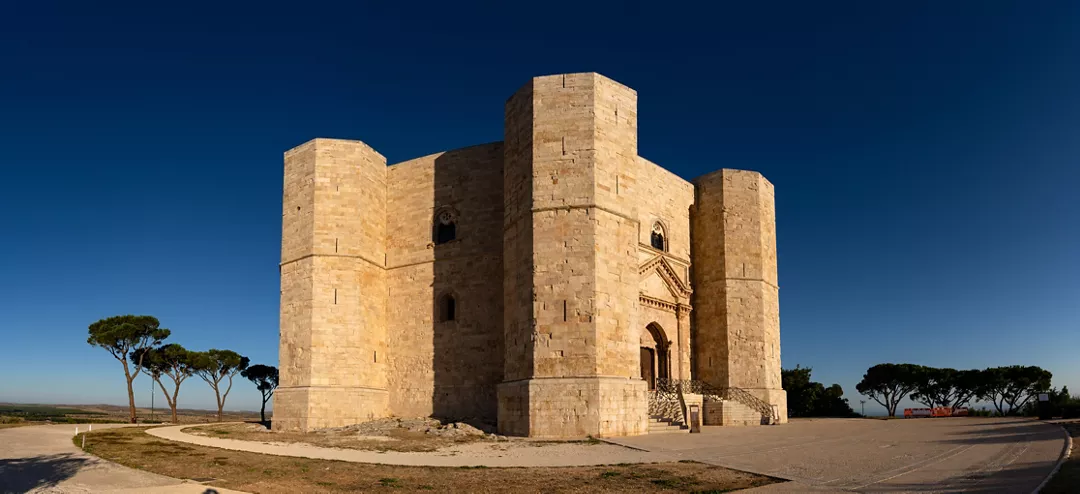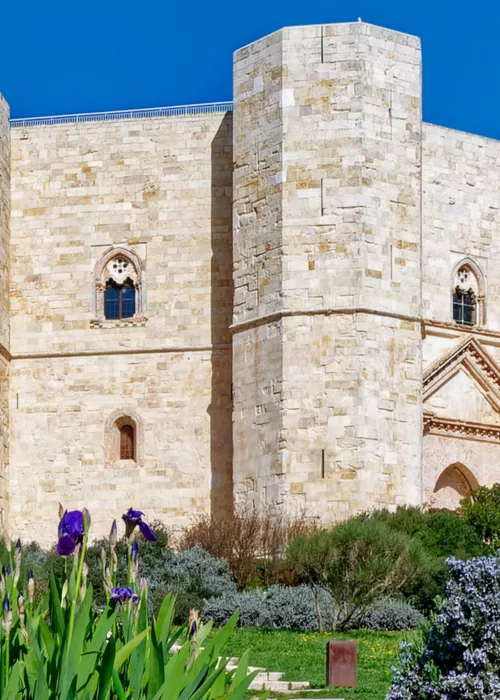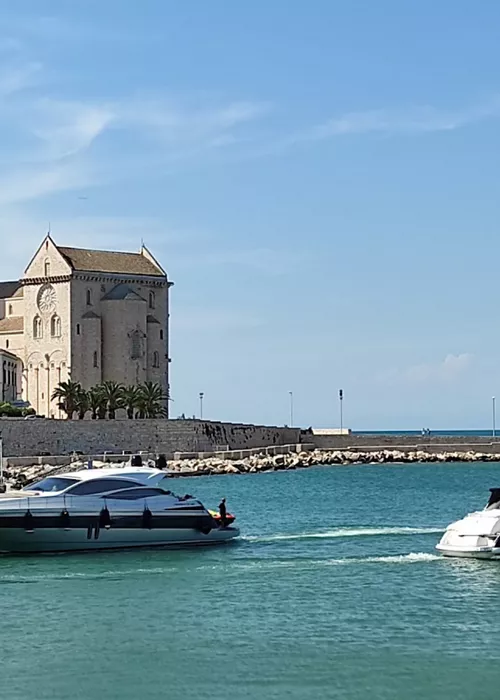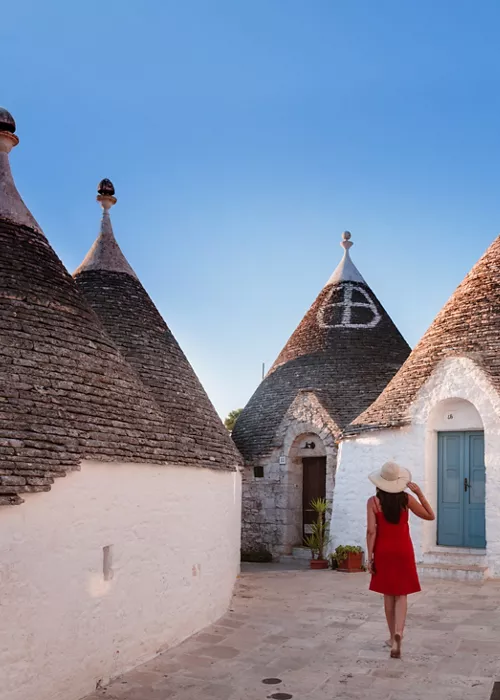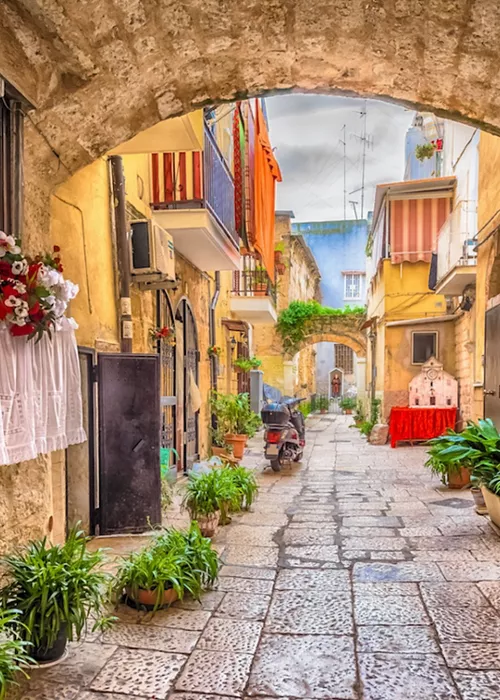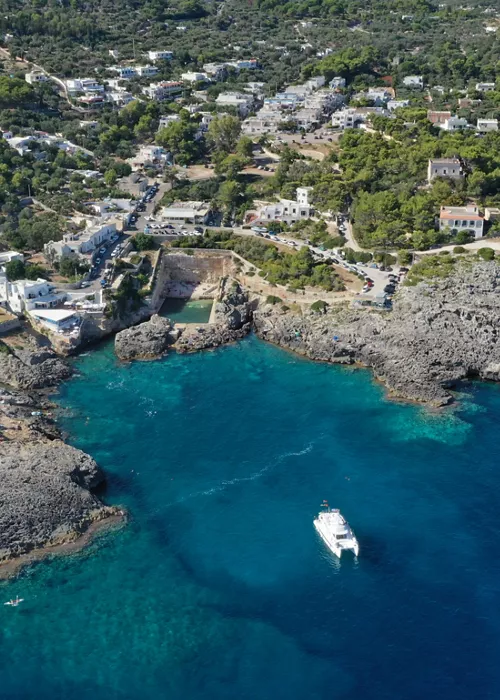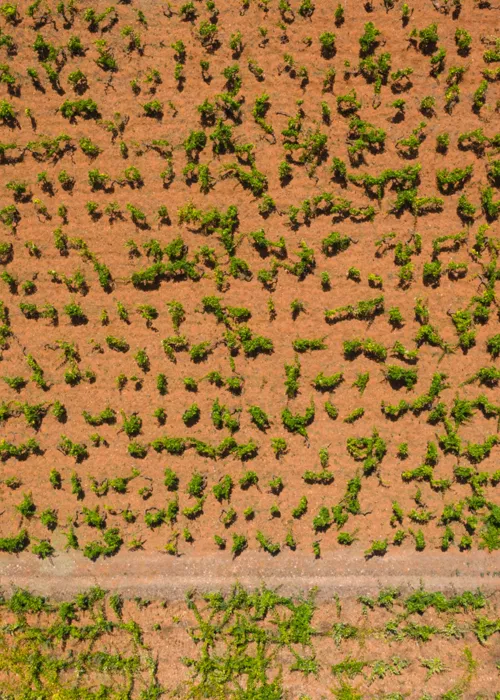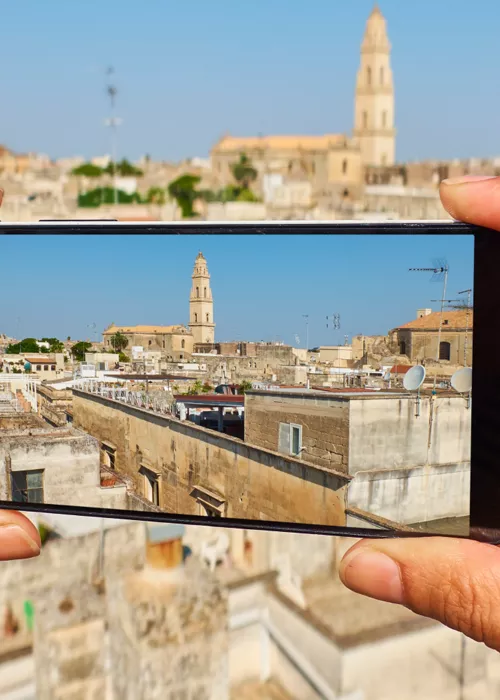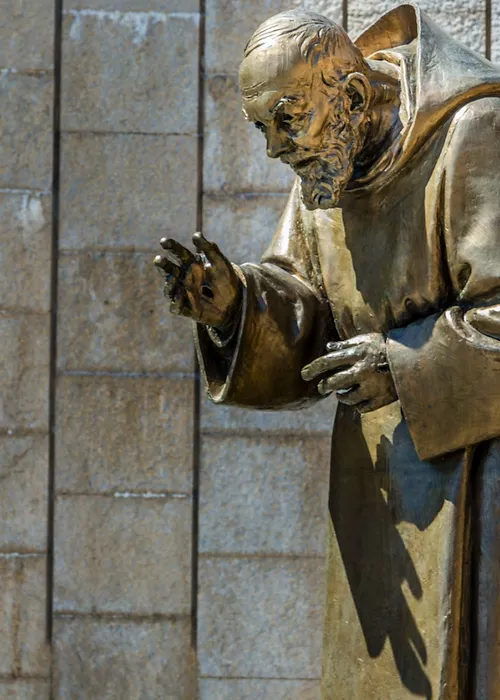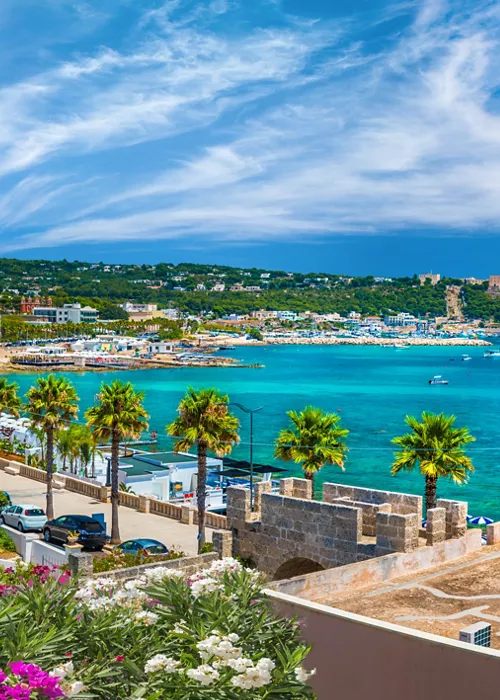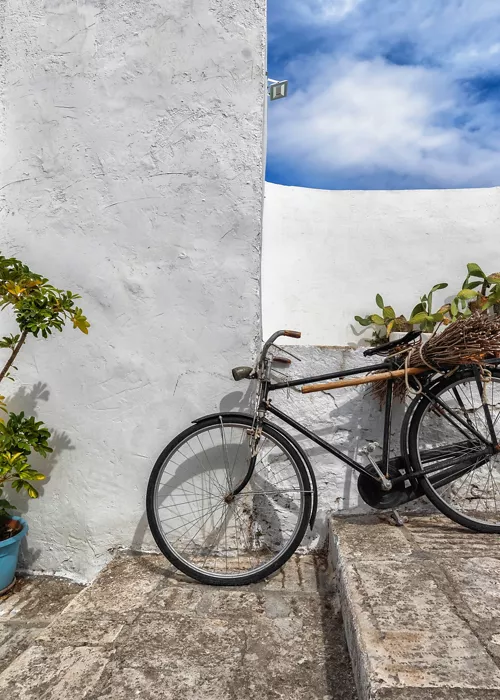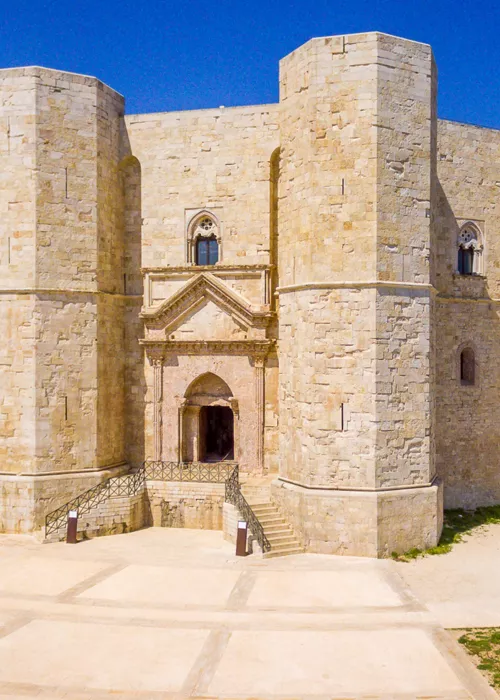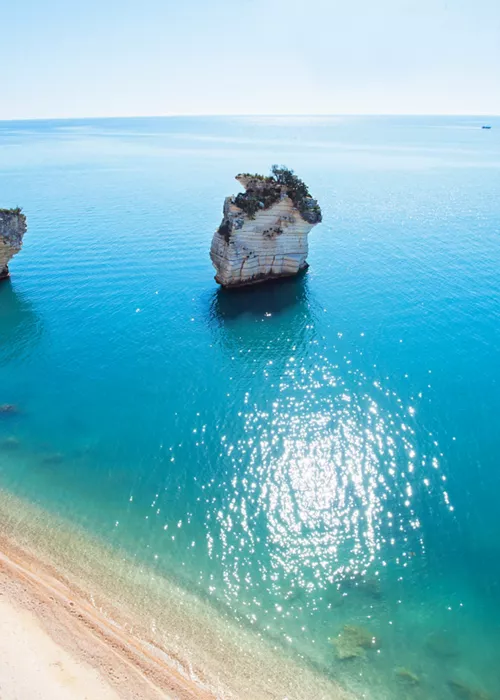Castel del Monte, la fortezza dei misteri di Andria
3 minuti
Castel del Monte, un capolavoro d’architettura medievale dichiarato Patrimonio dell’umanità dall'UNESCO ricco di simboli e di misteri.
Siete pronti a scoprirli tutti?
Cos'è e dove si trova Castel del Monte
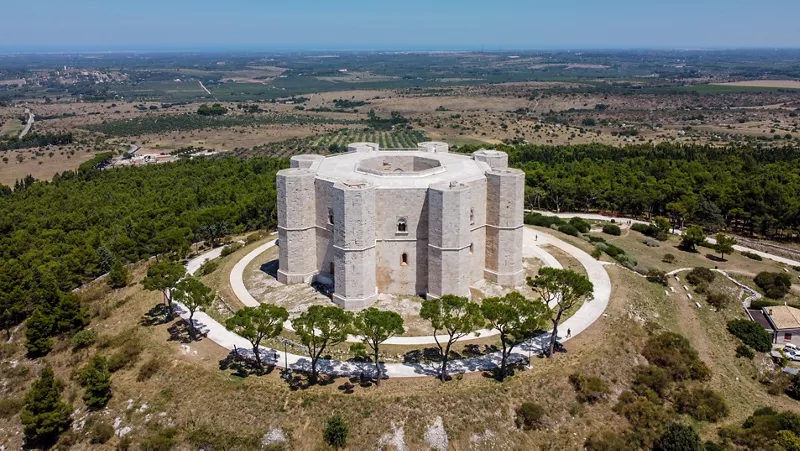
Castel del Monte è uno dei simboli della Puglia, una fortezza medievale eretta nel XIII secolo sull'altopiano delle Murge occidentali alle porte della splendida cittadina di Andria, lungo la costa adriatica dell’Italia meridionale.
Fatta costruire da Federico II su una collina a 540 metri sul livello del mare, la fortezza di Castel del Monte di Andria è considerata un geniale esempio di architettura medievale, in grado di riflettere la cultura umanistica e la vasta educazione del suo fondatore, Imperatore del Sacro Romano Impero e Re di Sicilia.
Storia e informazioni su Castel del Monte
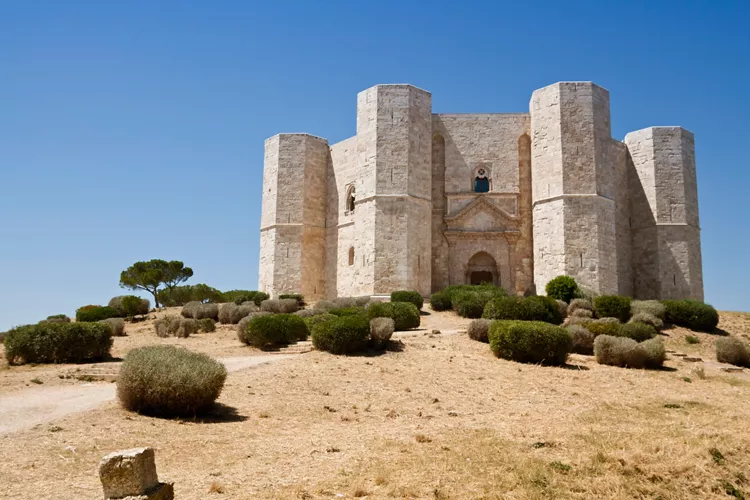
Federico II di Svevia è stato una delle figure più affascinanti della storia medievale, circondato da un alone di mistero e protagonista di tante leggende. Federico II era un uomo appassionato di matematica, poesia, filosofia e astronomia e dotato di uno spirito cosmopolita che lo portò, come Imperatore del Sacro Romano Impero prima e Re di Sicilia dopo, ad accogliere presso la sua corte studiosi greci, arabi, italiani ed ebrei.
Durante il suo regno Federico II di Svevia fece costruire tanti castelli in tutta l'Italia meridionale, ma è nel Castel del Monte che si possono ritrovare alcuni aspetti chiave della figura del sovrano e le sue passioni.
Castel del Monte fu costruito a partire dal 1240 secondo un estremo rigore geometrico e matematico, combinando elementi stilistici diversi, dal taglio romanico dei leoni dell’ingresso alla cornice gotica delle finestre e dei portali, senza dimenticare l’arte classica dei fregi interni e le raffinatezze islamiche dei mosaici. Neanche la posizione fu casuale, ma studiata in modo tale da creare particolari effetti di luci e ombre in determinati periodi dell'anno.
Perché Castel del Monte è diventato sito UNESCO
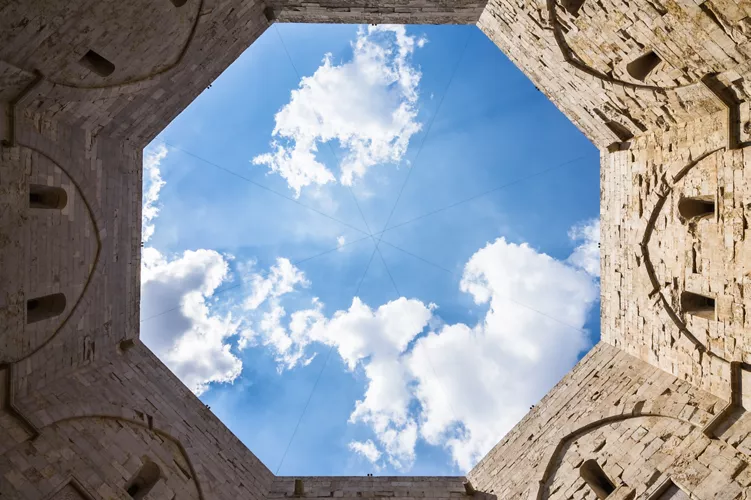
La fortezza di Castel del Monte, legata indissolubilmente a Federico II di Svevia, è un esempio di architettura medievale che, riflettendo le idee umanistiche dell'Imperatore, riesce a fondere in modo armonioso elementi dell'architettura classica con decorazioni tipiche dell'architettura araba.
Questa perfezione formale dell'edificio ha portato l'UNESCO a considerarlo Patrimonio dell'Umanità nel 1996, e riconoscere in Federico II uno dei precursori dei moderni umanisti.
Cosa vedere a Castel del Monte
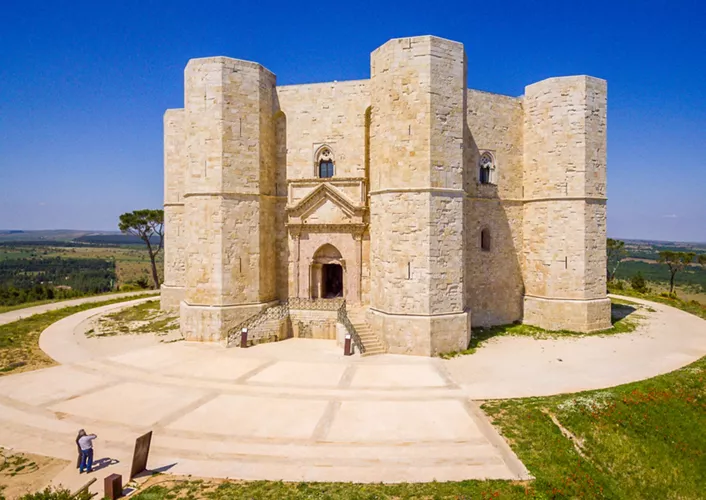
La perfezione formale di Castel del Monte si vede già in lontananza, quando da Andria vi inoltrate nel Parco Nazionale dell'Alta Murgia e iniziate ad avvicinarvi alla collina su cui sorge. Le prime cose che noterete sono l'assenza di uno degli elementi tipici dell'architettura medievale, il fossato perimetrale, e la particolare pianta ottagonale di Castel del Monte, il primo assaggio della simbologia che caratterizza questa fortezza.
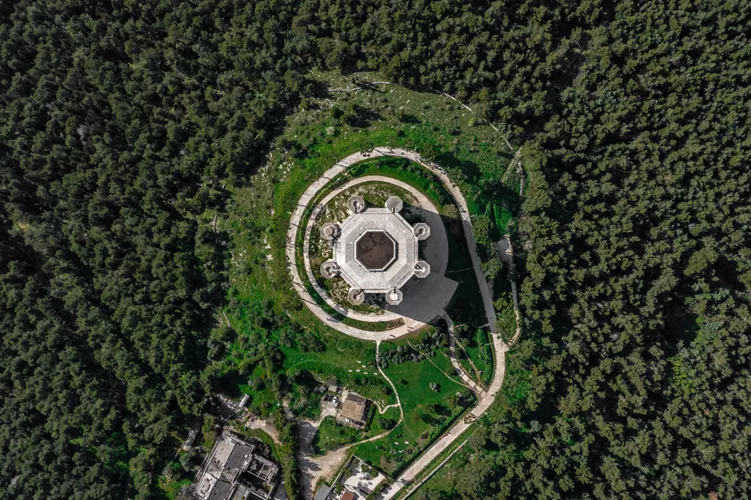
La forma ottagonale della pianta, che dà a Castel del Monte la configurazione di una elegante corona di pietra, è presente in tutti gli ambienti del castello. 8 sono le sale del piano terra, 8 sono quelle del primo piano. 8 sono le torri che circondano l'edificio, tutte con pianta ottagonale e disposte sugli otto spigoli della pianta.
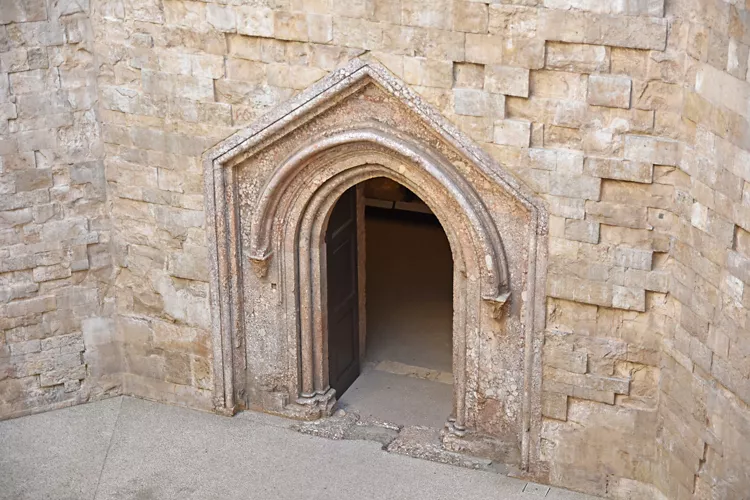
Questa ricorrenza ossessiva del numero 8 fa della fortezza di Castel del Monte un luogo esoterico che per secoli ha affascinato i migliori studiosi. Ma i misteri della fortezza non si fermano qui e si scoprono pian piano durante la visita. Alla struttura si accede varcando il portale d'ingresso, un grande arco in stile arabo con timpano in stile greco-romano e bifora in stile gotico.
Il colore chiaro delle facciate in pietra calcarea e marmo bianco caratterizza anche gli interni ormai spogli delle decorazioni che lo abbellivano in passato. La luce che illumina il piano terra arriva da 8 finestre monofore situate su ciascuno degli otto lati della pianta. Lo stesso numero di finestre si trova al piano superiore, con una piccola differenza: 7 finestre sono bifore, mentre una sola, quella rivolta verso Andria, è una trifora.
I due piani della fortezza sono collegati internamente da scale a chiocciola situate in 3 delle torri che circondano l'edificio. Se avete già visitato altre strutture realizzate in questo periodo noterete un altro particolare interessante: le scale a chiocciola, composte da 44 graditi ciascuna, sono disposte in senso antiorario, contrario alle regole di costruzione difensiva dell’epoca perché avrebbe costretto i soldati chiamati a difendere il castello a impugnare l'arma con la mano sinistra.
Questo particolare è uno dei tanti che ha spinto gli studiosi a escludere l'ipotesi che Castel del Monte sia mai stato utilizzato come struttura difensiva. Mancano le mura di cinta e il fossato, le feritoie sono troppo strette e l'intero edificio non si trova in una posizione strategica.
A cosa serviva allora Castel del Monte? Tante ipotesi e poche certezze: un luogo appartato in cui immergersi nello studio, sul modello del sollazzo arabo, residenziale e di rappresentanza.

